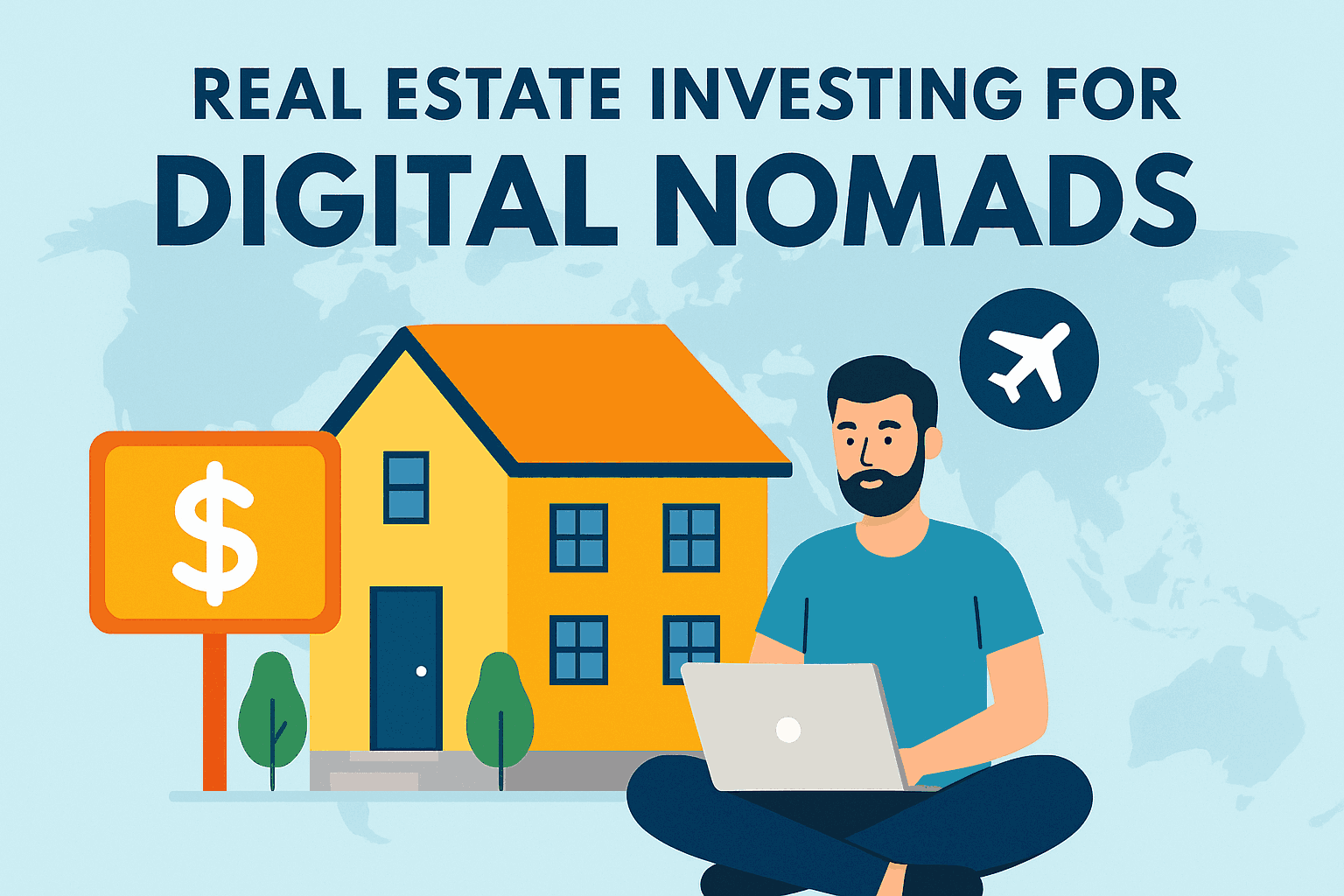
Many digital nomads skip real estate entirely, thinking it’s incompatible with their mobile lifestyle. After all, buying and managing a home when you’re bouncing between Bali and Barcelona seems unrealistic. But in 2025, real estate investing for digital nomads is not only possible—it’s one of the smartest ways to build long-term wealth while staying mobile.
From remote-friendly investment platforms to location-independent rental income strategies, there are ways to gain exposure to real estate markets without ever owning a traditional home. Here’s how to make it work as a nomad.
Why Real Estate Still Matters for Nomads
Real estate remains a powerful asset class for building passive income, fighting inflation, and diversifying beyond stocks. For nomads, it can:
- Generate monthly income while you live abroad
- Serve as a hedge against currency instability
- Build net worth without managing physical property
- Provide optional residency in certain countries
The trick is adapting your strategy to your lifestyle. You don’t have to own a house or manage tenants to reap the rewards.
Best Real Estate Strategies for Digital Nomads
1. Real Estate Crowdfunding
You can invest in fractional shares of rental or commercial properties through online platforms. No need to live near the property, and you can start with as little as $10.
Benefits:
- Passive income from rental dividends
- Hands-off management
- Geographic diversification
Top platforms include:
- Fundrise
- Arrived Homes
- RealtyMogul
- Groundfloor
2. REITs (Real Estate Investment Trusts)
Publicly traded REITs offer another hands-off way to invest in real estate. These are companies that own or finance real estate and trade like stocks.
Types of REITs:
- Equity REITs (own and manage income-generating properties)
- Mortgage REITs (invest in property debt)
- Hybrid REITs (do both)
REITs can be purchased on platforms like Vanguard, Fidelity, or M1 Finance.
3. Buy-and-Rent via Property Management Companies
If you want to own property, consider hiring a full-service property manager. They handle everything from tenants to maintenance, and you collect monthly rent remotely.
Tips:
- Invest in landlord-friendly states (e.g., Texas, Florida)
- Choose stable rental markets
- Budget 8–12% of rental income for management fees
You can also use turnkey real estate providers who sell properties that are already rented and professionally managed.
4. International Property for Residency
In countries like Portugal, Panama, or Thailand, buying property can grant residency or visa benefits.
Examples:
- Portugal Golden Visa: Invest €280,000+ in property for residency
- Panama Friendly Nations Visa: Own property worth $200,000+
- Thailand Elite Visa: Combine residency with luxury perks
This works well for nomads seeking a base or second passport.
5. Short-Term Rentals (Airbnb Model)
If you travel slowly or part-time, owning a property and renting it short-term while you’re away can generate high income.
Use smart locks and property managers to automate operations. This works best in tourist hotspots or remote-worker hubs.
Comparison Table: Real Estate Options for Nomads
| Method | Ownership | Passive? | Min Investment | Global-Friendly? |
|---|---|---|---|---|
| Crowdfunding | No | Yes | $10–$500 | Yes |
| REITs | No | Yes | $1+ | Yes |
| Buy-and-Rent | Yes | Semi | $50,000+ | Depends |
| Short-Term Rentals | Yes | Semi | $100,000+ | Depends |
| International Residency Property | Yes | Yes | $200,000+ | Yes |
Tax Considerations for Nomadic Investors
If you’re a U.S. citizen, the IRS taxes your global income. Real estate investments like REITs and crowdfunding often issue 1099s.
Tips:
- Use a tax professional with expat experience
- Consider investing through a Roth IRA for tax-free gains
- Track depreciation and expense deductions for rental income
Some platforms offer self-directed IRA options that allow you to hold real estate in retirement accounts.
How to Start as a Nomadic Investor
- Set a Budget
Know how much you can allocate monthly or yearly. Start small and grow over time. - Define Your Goals
Are you seeking cash flow, appreciation, or portfolio diversification? - Choose Passive-First Options
Start with REITs or crowdfunding if you’re fully nomadic. - Research Platforms and Markets
Focus on well-reviewed platforms and stable markets with long-term growth potential. - Track Performance
Use dashboards, mobile apps, or spreadsheets to watch dividends and asset value. - Diversify
Don’t put all your money into one property or platform. Spread across asset types.
Common Mistakes Nomads Make in Real Estate
- Buying property in countries they don’t understand legally
- Underestimating maintenance and tenant issues
- Ignoring tax obligations in the U.S. or abroad
- Holding illiquid real estate while needing cash flow
- Skipping due diligence on crowdfunding or REIT platforms
Tools for Remote Real Estate Investing
- Roofstock: Buy single-family rentals remotely
- Fundrise/Arrived: Crowdfunding platforms for U.S. real estate
- Vanguard Real Estate ETF (VNQ): Diversified REIT index fund
- DealCheck: Analyze rental property deals virtually
- Stessa: Track income and expenses for your properties
Final Thoughts
You don’t need to give up on real estate just because you’re a digital nomad. From REITs to remote-managed properties, there are plenty of ways to participate in this wealth-building asset class without putting down roots.
Real estate investing for digital nomads is no longer a contradiction—it’s a smart financial move. Just make sure your investments match your mobility, cash flow needs, and risk tolerance. Start small, stay diversified, and let your money work for you while you live life on your terms.